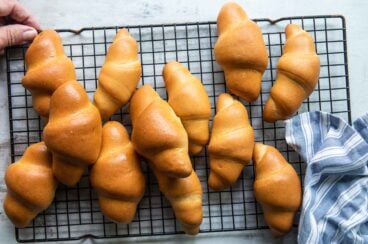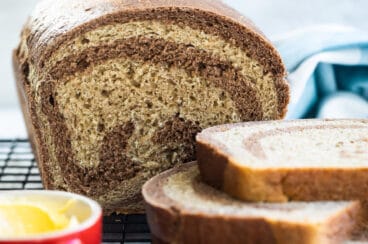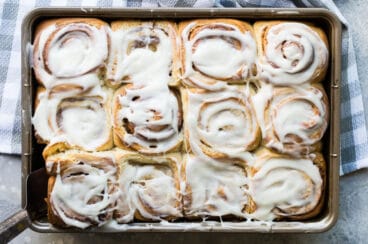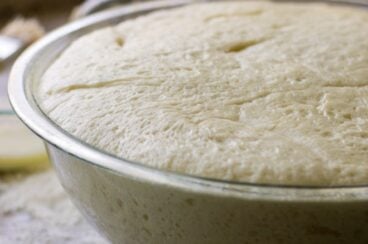This post may contain affiliate links. For more information, please see our affiliate policy.
Learn How to Activate Yeast, a simple yet crucial element in baking recipes. Here’s everything you need to know to be successful.
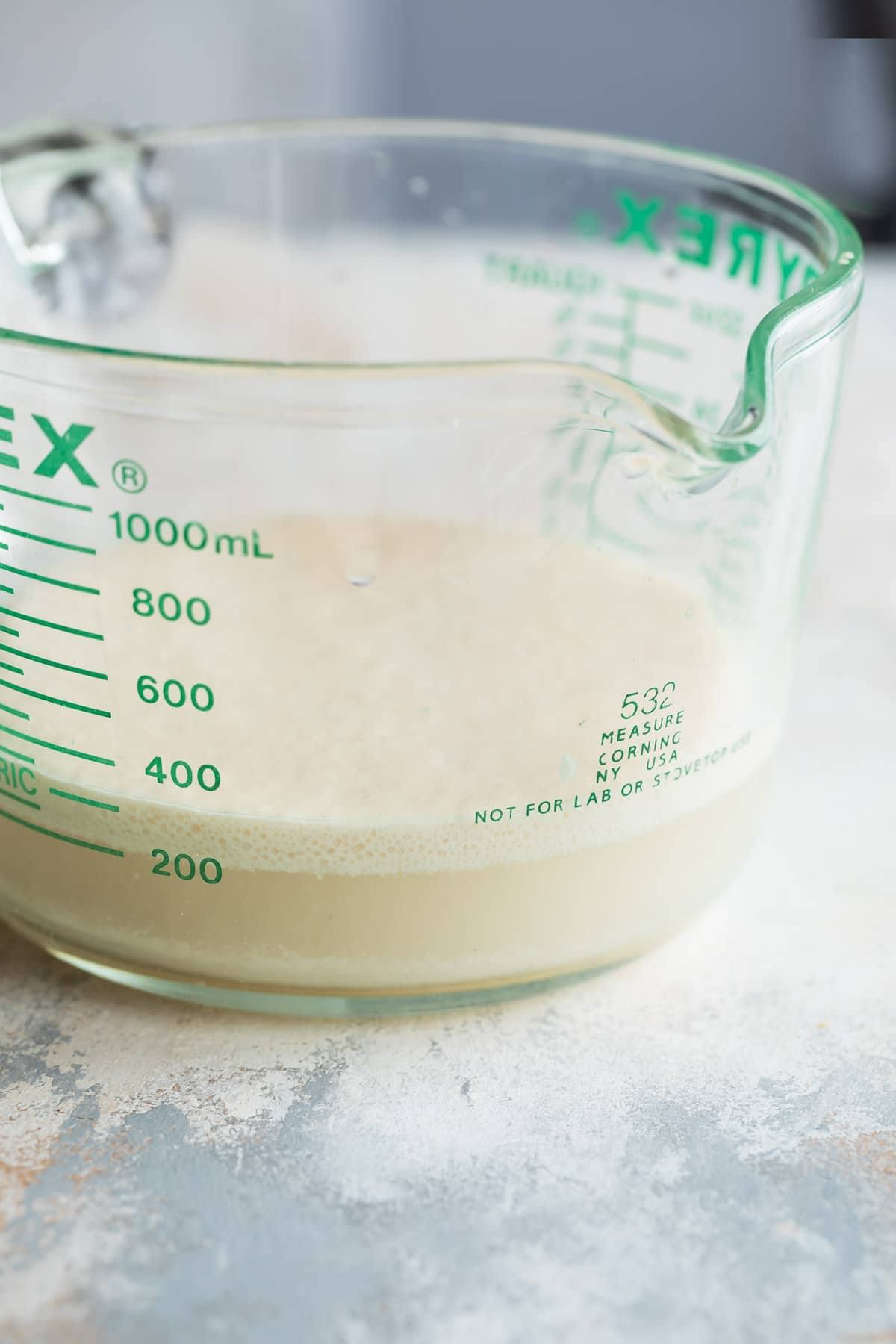
Table of Contents
Recipe ingredients
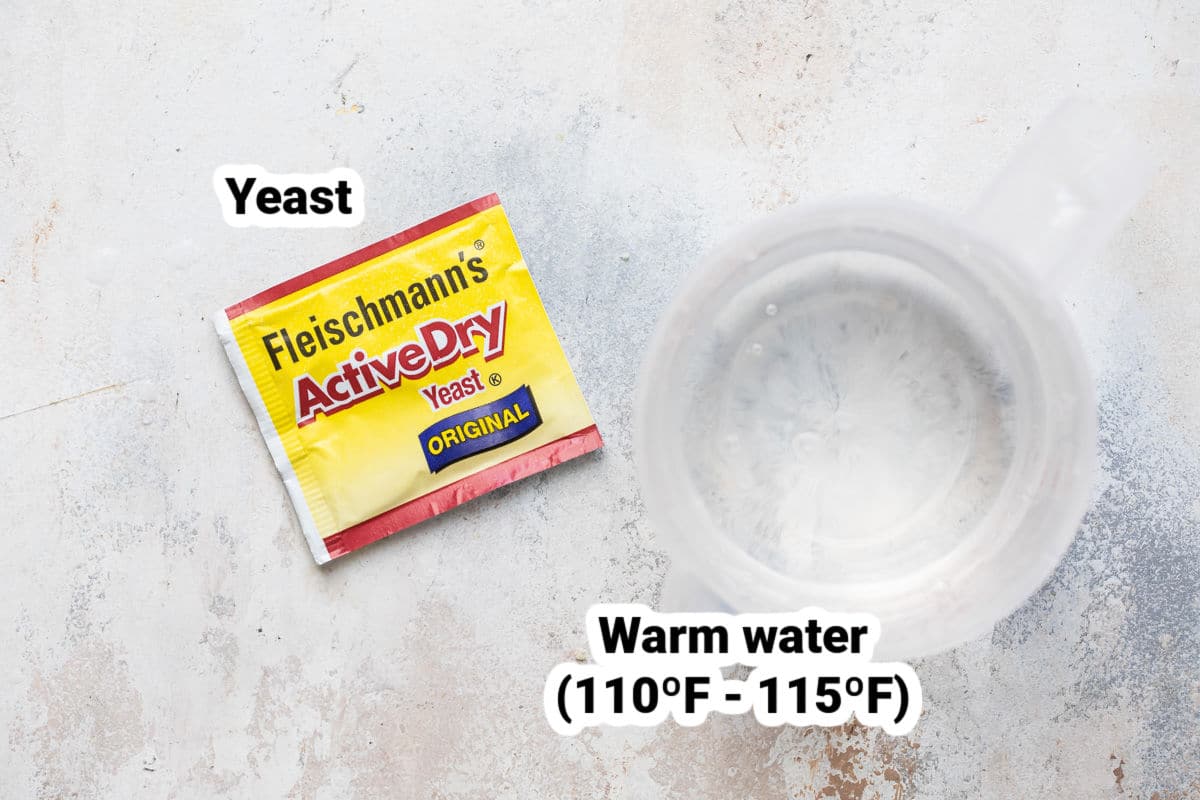
At a Glance: Here is a quick snapshot of what ingredients are in this recipe.
Please see the recipe card below for specific quantities.
Ingredient notes
- Water: For best results, use tap water that is heated to 110 – 115 degrees Fahrenheit and use a thermometer. Any temperature between 75 degrees and 130 degrees should work, but yeast dies at 138 degrees. Some recipes use milk instead of water to proof yeast, so just follow your recipe.
- Sugar: Optional food for the yeast. Use the sugar from your recipe amount, not additional. If the recipe doesn’t call for sugar for blooming the yeast, you can still add it. Adding 1 teaspoon of sugar to a recipe that doesn’t call for it, for the purpose of feeding your yeast, won’t affect the overall taste of the bread. Honey or agave syrup work too.
- Types of Yeast: Active dry yeast lies dormant and needs a warm liquid to become “activated.” Instant yeast, also known as quick-rise or rapid-rise yeast, does not need to be activated or “bloomed” before using. The yeast cells are ready to go as-is and simply gets incorporated right into your dry ingredients. Fresh yeast is not easily available, but if you happen to have the small cakes or bars of it, just crumble it into warm water like active dry yeast to activate.
Step-by-step instructions
- In a small saucepan, heat water to 110 degrees. Stir in sugar until dissolved and remove from heat. Add to a measuring cup and sprinkle and stir in packet of yeast.
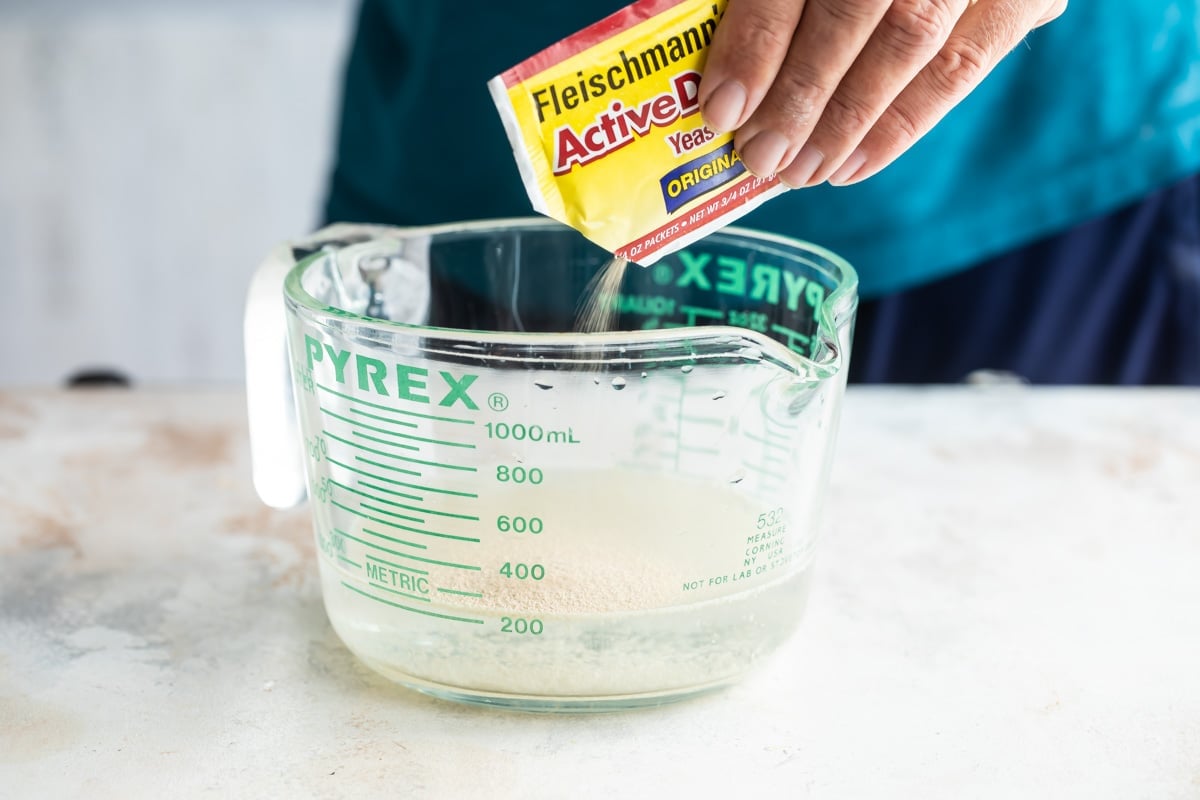
- Set aside to bloom until you see foam, about 5 to 10 minutes.
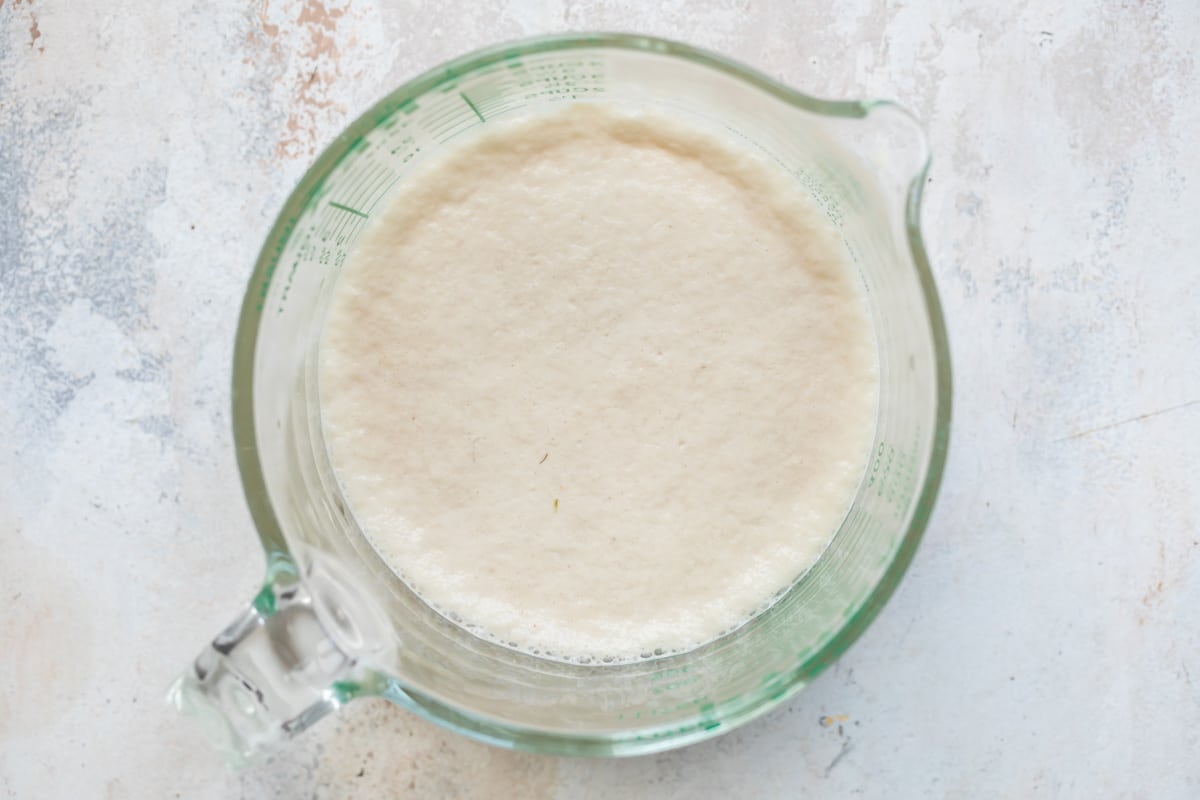
Recipe tips and variations
- Yield: The measurements in this recipe are a guide to explain the process. Please follow the measurements in your particular recipe.
- Storage: Store open jars of yeast in the refrigerator in an airtight container for up to 4 months or in the freezer for up to 6 months. Use straight from the freezer (no need to thaw). Unopened packets of yeast can be stored in a cool, dry place to provide a longer shelf life.
- Expired: Your yeast should be bubbling and foamy within 5-10 minutes of activation. If it looks like nothing is happening in your bowl, the yeast may be expired. Discard and try again with a fresh batch.
- Yeast freshness test: In a 1-cup liquid measuring cup, dissolve 1 teaspoon sugar in ½ cup warm water (between 110 and 115 degrees). Stir in 2 ¼ teaspoons (or 1 packet) yeast. After 10 minutes, the yeast should have risen to or above the 1-cup marker on the measuring cup.
Put your yeast to work
Bread Recipes
Homemade Crescent Rolls
Bread Recipes
Marble Rye Bread
Breakfast Recipes
Homemade Cinnamon Rolls
Baking Basics
How to Proof Dough
Join Us
HUNGRY FOR MORE? Sign up for our weekly newsletter and follow along on Facebook, Pinterest, and Instagram for our latest recipes! Tag all your glorious creations #culinaryhill so we can eat vicariously through you.
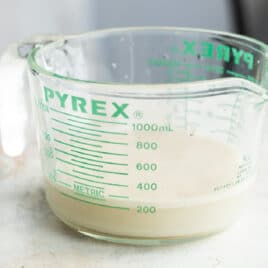
How to Activate Yeast
Learn how to activate yeast, a simple yet crucial element in baking recipes. Here's everything you need to know to be successful.
Ingredients
- 1 cup water (or the amount in your recipe, see note 1)
- 1 teaspoon sugar (see note 2)
- 2 ¼ teaspoons active dry yeast (1 packet, see note 3)
Instructions
- In a small saucepan, heat water to 110 degrees. Stir in sugar until dissolved and remove from heat. Stir in yeast and set aside to bloom until foamy and bubbling, about 5 to 10 minutes.
Notes
- Water: For best results, use water that is heated to 110 – 115 degrees Fahrenheit and use a thermometer. Any temperature between 75 degrees and 130 degrees should work, but yeast dies at 138 degrees. Some recipes use milk instead of water to activate yeast, so just follow your recipe.
- Sugar: Optional food for the yeast. Use the sugar from your recipe amount, not additional. If the recipe doesn’t call for sugar for blooming the yeast, you can still add it. Adding 1 teaspoon of sugar to a recipe that doesn’t call for it, for the purpose of feeding your yeast, won’t affect the overall taste of the bread. Honey or agave syrup work too.
- Yeast: Active yeast lies dormant and needs a warm liquid to become “activated.” Instant yeast, also known as quick-rise or rapid-rise yeast, does not need to be activated or “bloomed” before using. It’s ready to go as-is and simply gets incorporated right into your dry ingredients. Fresh yeast is not easily available, but if you happen to have the small cakes or bars of it, just crumble it into warm water like active dry yeast to activate.
- Yield: The measurements in this recipe are a guide to explain the process. Please follow the measurements in your particular recipe.
- Storage: Store open jars of yeast in the refrigerator for up to 4 months or in the freezer for up to 6 months. Use straight from the freezer (no need to thaw). Unopened packets of yeast can be stored in a cool, dry place.
- Expired: Your yeast should be bubbling and foamy within 5-10 minutes of activation. If it looks like nothing is happening, the yeast may be expired. Discard and try again with a fresh batch.
- Yeast freshness test: In a 1-cup liquid measuring cup, dissolve 1 teaspoon sugar in ½ cup warm water (between 110 and 115 degrees). Stir in 2 ¼ teaspoons (or 1 packet) yeast. After 10 minutes, the yeast should have risen to or above the 1-cup marker on the measuring cup.
Nutrition
Calories: 6kcalCarbohydrates: 1gProtein: 1gFat: 1gSaturated Fat: 1gMonounsaturated Fat: 1gSodium: 2mgPotassium: 16mgFiber: 1gSugar: 1gVitamin C: 1mgCalcium: 1mgIron: 1mg
Did you make this recipe?Tag @culinaryhill on Instagram so we can admire your masterpiece! #culinaryhill
Meggan Hill is a classically-trained chef and professional writer. Her meticulously-tested recipes and detailed tutorials bring confidence and success to home cooks everywhere. Meggan has been featured on NPR, HuffPost, FoxNews, LA Times, and more.
